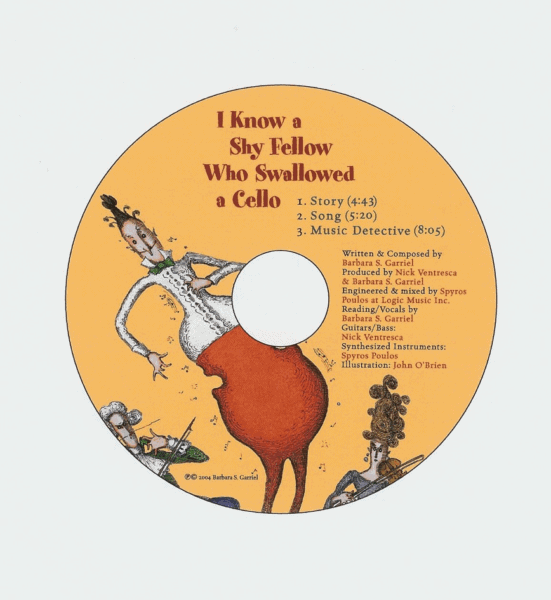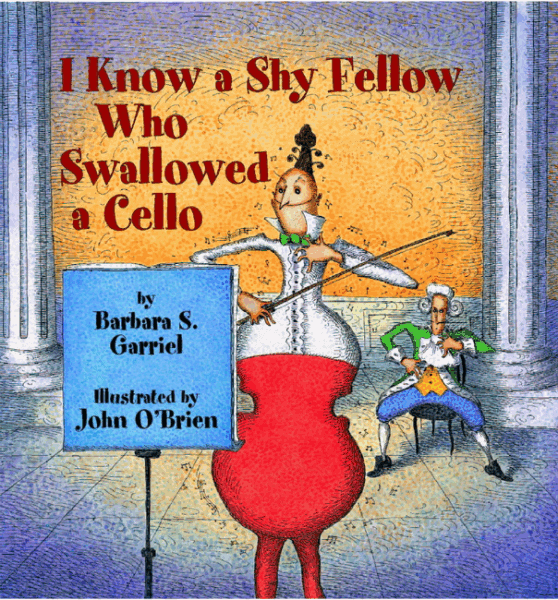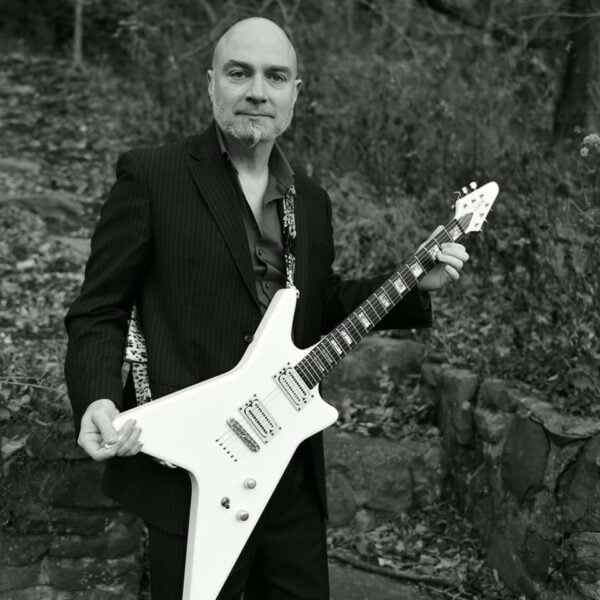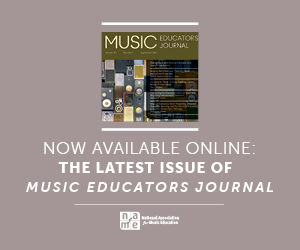NAfME BLOG
Yay Storytime! Musical Adventures with Children’s Picture Books, Part One

/ News Posts / Yay Storytime! Musical Adventures with Children’s Picture Books, Part One
Yay Storytime!
Musical Adventures with Children’s Picture Books, Part One
By Thomas Amoriello Jr.
NAfME Council for Guitar Education Chair
Children’s picture books serve many purposes in forming the mind and education of a child in a positive way. As we all know, there are a wide variety of books that focus on different aspects of reading development, character traits, and even some silly fun! Words and artwork combine to form an important factor in childhood, sparking imagination.
In our field, music educators can also use children’s picture books as a multi-disciplinary learning tool to connect with youngsters in the “pre-instrument phase of their instruction.” These books serve as a way to introduce instruments, composers, music literacy and rhythmic stylings, artistic discovery, and so much more. Though you will not read any scholarly cited research here, I thought it would be enjoyable to hear random thoughts from a few authors of musically inspired books and a little background on their creations. Today for part one of this article we will start with authors Lesléa Newman and Barbara Garriel.
Lesléa Newman on Ketzel, the Cat who Composed
Ketzel is based upon a true story and covers many facets of the musical world including, music literacy, composition, artistic discovery, diversity, the creative roadblock, and even royalty checks. What type of feedback have you received from educators, parents, musicians, and children?
I have received very positive and enthusiastic responses from music teachers who tell me their students are delighted with the story, parents who tell me their children ask to have the story read to them over and over, musicians who get a big kick out of the book, and children who adore Ketzel and love hearing her composition which can be found on the internet here. The book has received several prestigious awards including the Association of Jewish Libraries Sydney Taylor Award and the Massachusetts Book Award. Also many, many cat-lovers have raved about the book, though every one of them insists that their own cat is even more talented than Ketzel!
Did you set out to write a book that could be shared in a music classroom?
When I write, I don’t really think about audience or how a book is going to be used. I write to tell a story. I was so charmed by Ketzel’s relationship with Moshe Cotel, so inspired by their creativity and so touched by the response that KetzeI’s composition received, I just had to tell the world their story.
Picture books can inspire children in so many ways: they can teach about music, musicians, different instruments, different cultures, and how music plays a part in the lives of people all over the world.
Are you a musician and did you face any obstacles in the storyline flow from a musical perspective during the drafting process?
I am not a musician, though I did take piano lessons when I was a child and teen, and I am a big music-lover. My brother is a musician—a fine guitar player—and my spouse is a deejay, so I am surrounded by music. In addition to writing children’s books, I am a poet, and there is a certain musicality to writing poems. There is meter, cadence, rhyme, repetition, sometimes a chorus or bridge, etc. And many of my poems have been set to music. (My book, October Mourning: A Song for Matthew Shepard has been turned into an opera, and an excerpt from the book is part of the libretto of the fusion oratorio, Considering Matthew Shepard.)
All this is to say that I am very aware of sound when I write a book, especially a children’s book, which I know will be read aloud. The beat poet Jack Kerouac sometimes chose sound over meaning, especially in his poetry, and I have been known to do the same. Ketzel, the Cat who Composed went through more than twenty drafts until I felt that it sounded right.
We are musical beings. There is music to our breath, to our heartbeats, to our pulse.
What are your thoughts on music in our society and the how children’s picture books can inspire future musicianship and advocacy for children and parents?
Music is so important! Just this morning I read a quote that said that singing for only ten minutes a day can change your life in positive ways. Being a person who sings in the shower and sings in the car, I know that is true. And singing together with a group of people is fun, uplifting, and joyous. We are musical beings. There is music to our breath, to our heartbeats, to our pulse. Picture books can inspire children in so many ways: they can teach about music, musicians, different instruments, different cultures, and how music plays a part in the lives of people all over the world.
Barbara Garriel on I Know a Shy Fellow Who Swallowed a Cello
Are you a musician? Have you hosted any library reading story time or assemblies?
I am! I play guitar, sing, and am a songwriter. I produced a CD, Ample Patience, of my original music for adults. I am hoping to record some of my children’s music soon, as well as send off a manuscript of those songs once I’ve written a couple more. I also wrote a song to accompany the book, I Know a Shy Fellow Who Swallowed a Cello. At first, I sang the book to the original, “I Know an Old Lady…” song, but then wrote and recorded my own melody and sang it at many of the presentations I did as an echo song.
I was a classroom teacher—K and 4th. After my books came out, I started holding school and library assemblies, as well as writing workshops. I love it because it gives my teacher self the chance to be with children, and I have an insider’s view having been a teacher. So, I try to make the programs both entertaining and educational. I use a Powerpoint to show the illustrations, examples of my work in progress and that of the illustrator, along with a one-of-a-kind puppet of the main character, Shy Fellow, and life-sized instruments on foam core, etc. So it’s a multi-sensory presentation.
 Was your book written to spark musical imagination?
Was your book written to spark musical imagination?
Yes, and then some. When I interviewed for my teaching job with the superintendent, I remember telling him that I thought music was the international language, and I still believe that. I always used music as an end in itself, but also a vehicle for community-building and also for teaching reading in my classrooms. I had a poem of the week, as well as a song of the week, and my K and 4th graders ended up with a binder of traditional and contemporary songs and poems by the end of the year.
So, in writing I Know a Shy Fellow Who Swallowed a Cello, I was first looking for a variation on a theme of “The Old Lady Who Swallowed a Fly,” but without such a deadly ending! (I would change that ending to sigh or cry for my kindergarteners.) And then, to invite kids to music via the playfulness and at the same time, they’d learn some musical instruments and be engaged in both literature and music.
What type of feedback have you received from educators, parents, musicians, and children?
I am humbly proud to say that I’ve gotten wonderful feedback. And the book has been in print for 14 years! And it had even been licensed by Scholastic for their book club one year.
Music teachers tell me they use the book regularly. Teachers use it to teach rhyme and also verbs, since there are so many actions in the story. (I created a teacher’s curriculum guide as well.) People will say that they are asked to re-read the book to their children over and over. And one example, every year I perform my music at a Harvest Festival, both original kids’ songs and cover songs, and I read the book that I have on big format foam core boards, and there is a family that has been coming for about three or four years. The oldest can recite the book by heart because they read it at home and each year with me.
And best of all, are the children’s responses: They want to chime in (which I absolutely encourage . . . even when I read it to 5th grade boys!!! LOL), and shake hands with the puppet, and sing the song, etc. That is very satisfying.
Did you set out to write a book that could be shared in a music classroom?
I think my purpose was broader, that it could be used in any classroom, as well as a music classroom, and at home. But, as I mentioned above, I believe music is a wonderful vehicle for many kinds of learning, and many kinds of learners. (I remember in high school studying with some friends for a test on short stories, and we made up a song to remember all the authors and titles!)
Did you face any obstacles in the storyline flow from a musical perspective during the drafting process? Kazoo, Flute, cymbal, etc.
I played around with how to start . . . he’d swallow a bell and perhaps he’d yell . . . (didn’t like the yelling part) and then maybe a drum and perhaps he’d hum . . . (I liked that, but realized I’d have a harder time either decreasing or increasing the size of the instruments and still have viable ones for rhyming). And then when I got fellow, cello, and bellow, I tell the kids at the assemblies, I felt like I had the triple play in rhyming, so that was what stuck. I used a book called a Word Menu, along with a rhyming dictionary. Both were invaluable!
And though I wanted “I Know an Old Lady” to be my framework, I decided to try to go in the opposite direction . . . from big to little (cello to bell) instead of little to big (fly to horse). That way it also got in the “straw that broke the camel’s back” concept (the bell being the straw, of course), and I didn’t want my character to die!
I worked REALLY hard on finding good, vibrant and engaging rhymes for each instrument. And I was pushed by my writers’ group to change the ending which ended up being so much fun finding verbs to match the instruments’ personalities . . . out tooted the flute, out crashed the cymbal, out cha-cha’ed the cello, etc.
Any final thoughts on the role music plays in our society and how children’s picture books can inspire future musicianship and advocacy for children and parents?
Big question . . . There are some absolutely wonderful and inspiring books with musical themes out there. (My music teacher friend and I are working on one with a jazz theme. We have a ways to go!)
I think the more we expose children and adults to music, the better. Again, as an end in itself. As a pathway to other learning. As a reminder how important music is to society and our culture. How music is an invitation to dance and sing. How music is a muse. How music is therapy. How music is a thread in connecting us to our own history and experiences. And how wonderful music is to bridge age and language gaps.
I think the more we expose children and adults to music, the better. Again, as an end in itself. As a pathway to other learning. As a reminder how important music is to society and our culture.
I will leave you with a list of books that I like to read in my classroom as I am sure most elementary music teachers have their own unique collection as well. Feel free to contact me with your thoughts or suggestions as I am open to dialog on this subject from other lovers of these books. And share your thoughts on Amplify.
- The Jazz Fly
- A Journey to Guitarland with Maestro Armadillo
- I Know a Shy Fellow Who Swallowed a Cello
- Zin Zan
- My Tata’s Guitar
- Ketzel, The Cat who Composed
- Hector, The Accordion Nosed Dog
- Mole Music
- Gus
- Playing from the Heart
- Martin the Guitar
- The Music Teacher from the Black Lagoon
- Ah Music
- Punk Farm
- Jimi Sings a Rainbow
About the author:
Thomas Amoriello is the NAfME Council for Guitar Education Chair and also serves as the Guitar Education Chairperson for the New Jersey Music Education Association. He teaches guitar for the Flemington Raritan School District and Hunterdon Academy of the Arts. Tom graduated from Shenandoah Conservatory with a Master of Music Degree in Classical Guitar Performance. He is the author of the children’s picture books; A Journey to Guitarland with Maestro Armadillo & Ukulele Sam Strums in the Sand (March 2019), both available from Black Rose Writing. He recently made two vinyl record releases on the H42 Records label of Hamburg, Germany, featuring former members of Black Sabbath, Whitesnake, Dio, Ozzy Osbourne, Yngwie J. Malmsteen’s Rising Force and more.
Interested in reprinting this article? Please review the reprint guidelines.
The National Association for Music Education (NAfME) provides a number of forums for the sharing of information and opinion, including blogs and postings on our website, articles and columns in our magazines and journals, and postings to our Amplify member portal. Unless specifically noted, the views expressed in these media do not necessarily represent the policy or views of the Association, its officers, or its employees.
Published Date
August 22, 2019
Category
- Repertoire
- Standards
Copyright
August 22, 2019. © National Association for Music Education (NAfME.org)






